Continuing the cycle about the legends of the Soviet sound, I wanted to separately touch on the topic of isodynamic
headphones created in the Land of Soviets. Today, many are convinced that planar magnetic technology (isodynamic radiation of sound waves) is a product of modern developments. There is a grain of truth in such judgments (the materials have changed), however, the principles themselves are not at all new and have been actively used to create audio equipment over the past 40 years.
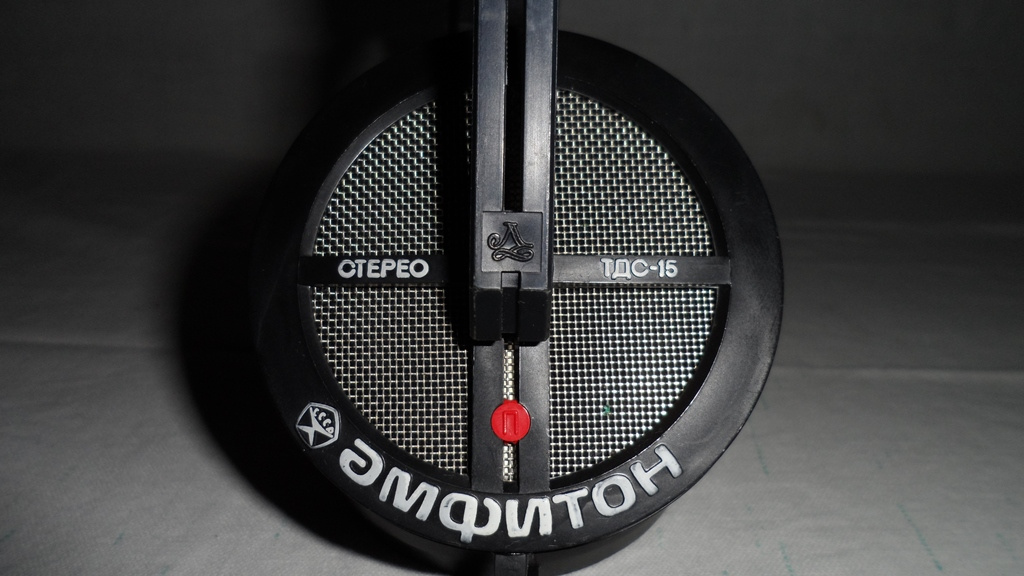
The authorship of the “unique” technologies, with a light hand of marketers, is attributed to the Japanese, the Chinese, and some “mysterious” US engineers. Not rarely, starting to use not too common isodynamic drivers, manufacturers position their products as something completely new, never used before. As it turned out, not everyone knows that isodynamic emitters have been produced for a long time, and at one time they were widely used in Soviet audio technology.
Fathers of Soviet isodynamics
Engineers Igor Levitsky and his colleagues from the Lvov Scientific Research Institute BREA are deservedly considered the creators of the most famous Soviet isodynamic drivers, as well as devices based on them. It was they who developed the legendary isodynamic headphones under the brand "Amfiton" TDS-7, TDS-15, TDS-21, H-25C (TDS-25). Today, Levitsky heads the development department of the international corporation OPPO Digital, where he also creates
headphones and speakers.
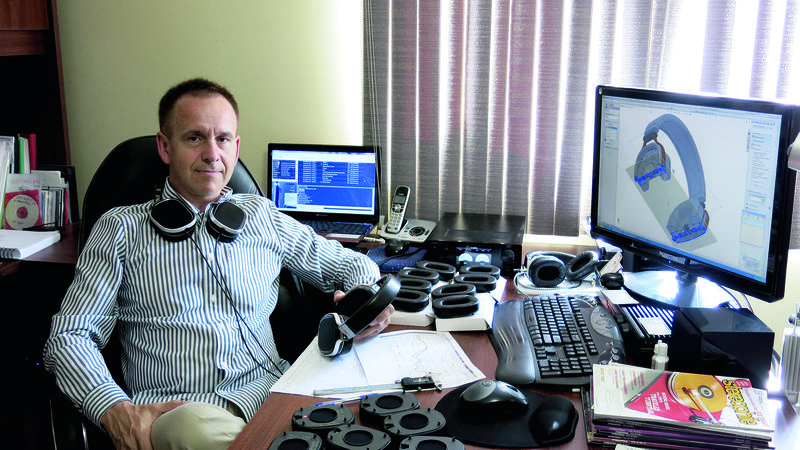 Levitsky at Oppo Digital photo whathifi.com
Levitsky at Oppo Digital photo whathifi.comAfter graduating from the electroacoustic faculty of the Kiev Polytechnic Institute, a talented young engineer Igor Levitsky decided to link his professional aspirations with the Lviv Scientific Research Institute of consumer electronic equipment (SRI BREA). As Levitsky himself asserted, he was impressed with the sound of the Japanese acoustics JVC Zero 5 with Matsushita tape emitters, which largely influenced the choice of topic for research and projects.
At that time, Soviet industry sought to catch up and overtake the West, so the USSR Chamber of Commerce and Industry purchased samples of Western technology and sent them to Soviet research institutes to study, and in some cases, copy. After a detailed study of the acoustic systems of Japanese developers, Levitsky began his hard work on creating new emitters in the sector that developed speakers and headphones.
TDS-7 - the firstborn NII BREA
At the time Levitsky arrived at the Scientific Research Institute BREA, the sector had already completed the creation of the TDS-7, the first Soviet isodynamic headphones. Among all the headphones of this type in the USSR, they were the most massive, and mass-produced from 1980 to 1990, the year. For some time these headphones were considered among the best in the country. At that time, they had almost unattainable for their traditional electrodynamic counterparts, acoustic characteristics.
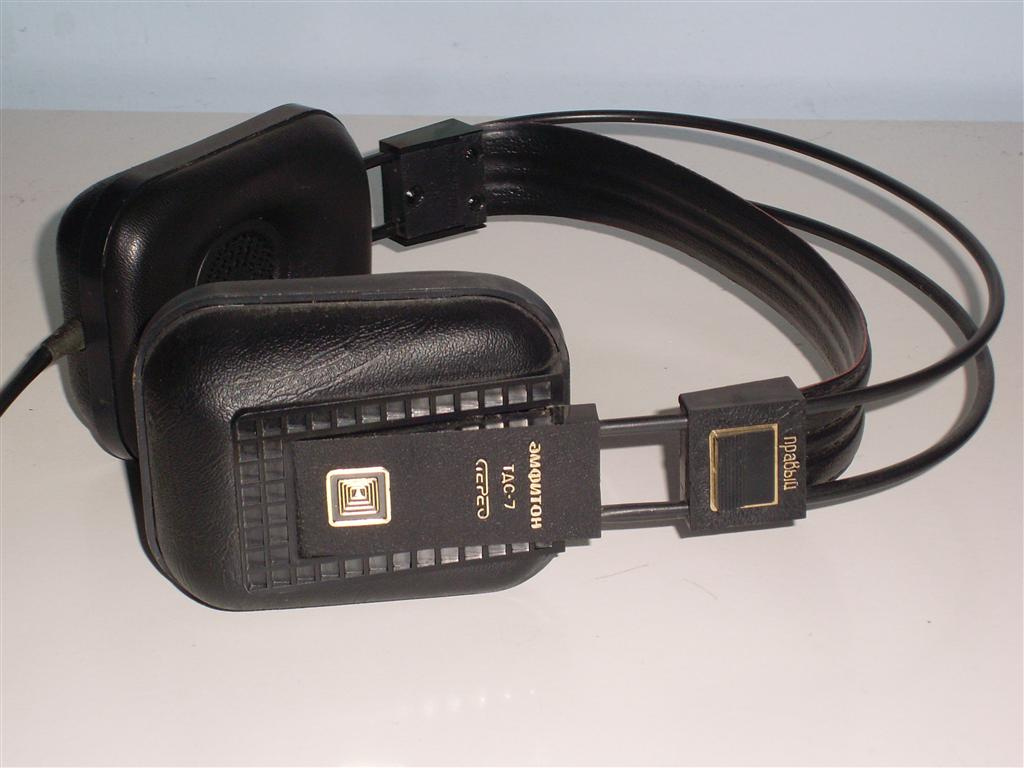
Evaluating TDS-7 in an interview with whathifi.com, Levitsky noted:
"... compared to everything else that was (or, rather, what was not) on the USSR market, TDS-7 - it was a powerful breakthrough to the territory of high-quality sound."
Characteristics of TDS-7:
- Frequency range: 20-20000 Hz.
- The harmonic distortion factor in the frequency range from 100 -2000 Hz - less than 1%.
- Sound pressure level at a frequency of 500 Hz per 1 mW: 94 dB
- Power input: 2 mW.
- Passport power: 1000 mW.
- Rated electrical resistance: 8 ohms.
- Retail price - 49 rubles., With a stand - 53 rubles. 40 kopecks (half the salary of a young engineer in the 80s).
- Weight without cable: 310 g
Another important advantage of the TDS-7 for the Soviet times was their relative accessibility for an ordinary buyer, in other words, “reachability”. At the same time TDS-7 were not without flaws. Their main disadvantage was ergonomics. Hour spent in the headband, pressing on the ears hard ear cushions, for users of modern technology will seem a disproportionate fee for good sound. But the harsh Soviet music lovers suffered and not like that.
TDS-15 - the descendant of the eminent Japanese
Having assessed all the advantages and disadvantages of the TDS-7, Levitsky understands that his colleagues made a big leap in terms of fidelity to play, but forgot about ergonomics and design. Hard ear cushions, oppressive headband and rectangular shape of the headphones turned the audition into a sophisticated voluntary torture.
The sector leadership also recognized the need to create a more advanced sample. So with the active participation of Levitsky, work began on the creation of Amfiton TDS-15 headphones. As the basis for the new development, we chose not the Japanese, but the Japanese high-end development of the Sansui SS-100. After analyzing the key drawbacks of the TDS-7 and the merits of the Japanese counterpart, the engineer suggested making an open supra-aural acoustic arrangement, which significantly improved the sound, compared to the half-closed predecessors.
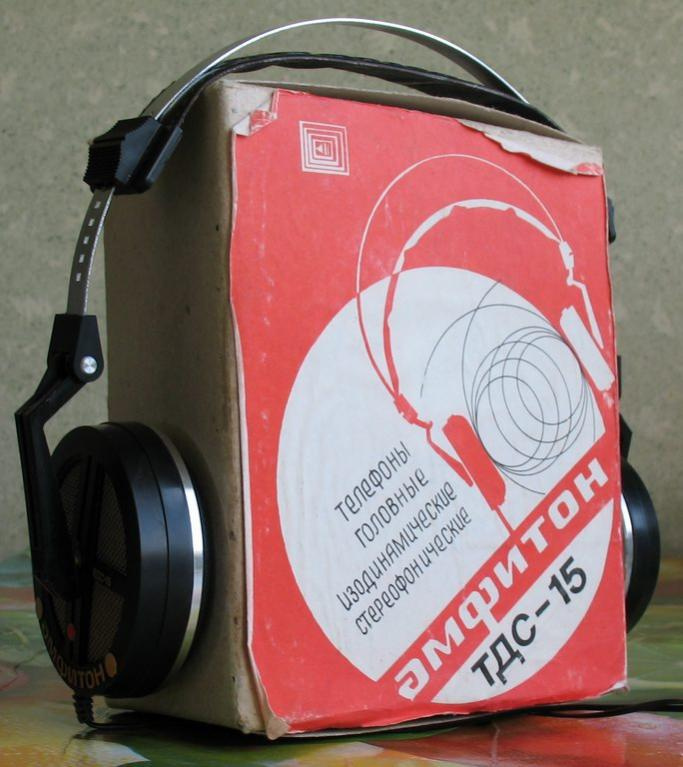
In addition, the development team proposed a round shape of the membrane and headphones, which improved ergonomics and did not negatively affect the sound. These decisions also positively influenced aesthetics, bringing the design of the new design closer to the best Western designs. NII BREA with its TDS-15 raised the bar for quality, design and ergonomics “to the skies”, becoming the new benchmark of Soviet HI-FI. The serial production of TDS-15 began in the mid-80s in two companies at once: the PO "Countemash" in Chisinau and the Leningrad NGO "Ferrite" (factory "Magneton").
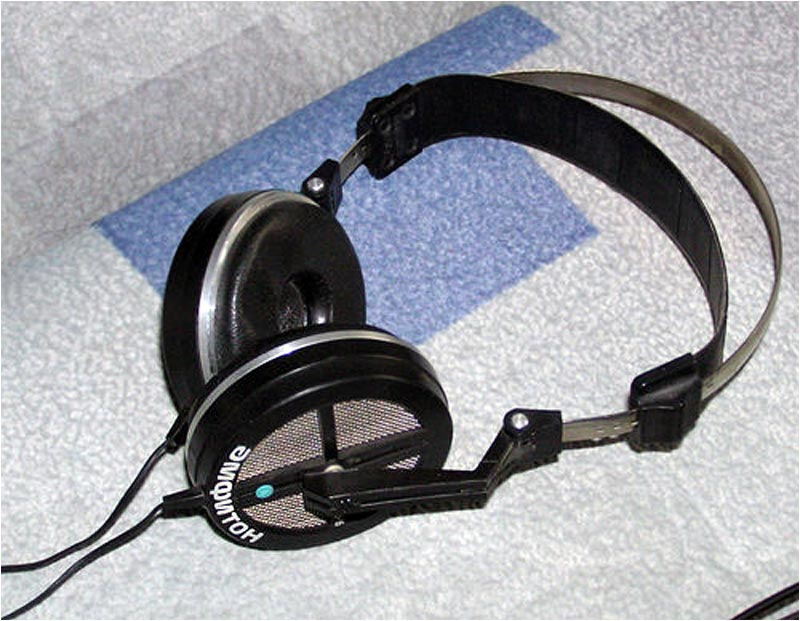
Characteristics of TDS-15:
- Driver type: isodynamic.
- Type of acoustic design: open (bowls lie on the ears, and do not wrap their ears).
- Resistance: 16 Ohms.
- Sound pressure level at a frequency of 500 Hz per 1 mW: 94 dB.
- Frequency range: 20-20 000 Hz (+ 3 / -3).
- Rated power: 2 mW.
- Passport power: 1000 mW.
- Weight without cable: 300 g
- The retail price of 50 rubles (for comparison, the original from the Sansui SS-100 at that time cost about $ 300) did not scare fans of good sound, but it was extremely difficult to find these headphones on the open market.
Holiday Portability N-21S
The top of the ergonomics and design refinement among the Soviet isodynamic headphones were TDS-21 (H-21C). They were the first development of Levitsky with soft foam ear cushions. The serial production of headphones began in 1989. The headband of the headphone was folded, which made it possible to make the device very compact.
Due to the small mass, compactness and foam rubber ear cushions of the N-21C, they quickly won a young audience of users of fashionable cassette players at the time.
Characteristics of the N-21S:
- Frequency range: 20-20 000 Hz.
- Resistance: 32 Ohms.
- Sound pressure level at a frequency of 500 Hz per 1 mW: 97 dB.
- Passport power: 500 mW.
- Dimensions: 220 * 205 * 60 mm.
- Weight without cable: 120 g
- Retail price: 35 rubles.
Amphiton N-25C - swan song of Lviv engineers
Already just before the decline of the Soviet era, Levitsky and the staff of his sector manage to develop the latest isodynamic headphones, created in the USSR - Amfiton H-25C. This development is almost completely free from "childhood diseases" TDS-7, and meets all the requirements of the time.
Work on the headphones are completed in 1990. Serial production lasts just over two years. The collapse of the union and privatization almost completely destroy the possibilities for the production of such equipment.
Characteristics of H-25C:
- Resistance: 32 Ohms.
- Maximum power rating: 0.1 watts.
- The harmonic distortion factor in the frequency range from 100-2000 Hz: less than 0.6%.
- Frequency range: 20-20000 Hz
- The sound pressure level at a frequency of 500 Hz per 1 mW: 98 dB.
- Connector: 3.5 mm (6.3 mm adapter included).
- Weight: 200 g
- Price: market (at the time of launch of mass production in the former USSR, fixed prices ceased to exist)
The developments of the research institute BREA, their theoretical base and practical experience have been carefully studied at other enterprises of the USSR. This allowed for a short period to create and adjust the release of several models of isodynamic
headphones at once, not directly related to the Lviv Institute.
The following is probably not a complete list of models of isodynamic headphones produced in the USSR in the 80s:
Lomo (12a35), Electronics Lviv (TDS-5, TDS-5M, TDS-19, N-28C), NGO Kvant Kiev (TDS-16 Echo), NGO in Smila (H-16 -16 , -16-40 , -16-100 - analogues -16 Echo).In the 90s, engineer Levitsky left for the United States, where he first implemented his ideas at BG Radia, which created isodynamic acoustic systems, and then became the head of development at
OPPO Digital , where he still works.
Total
Soviet engineers sometimes created what today marketers in the west assign the status of innovative developments and supernovae ideas. It is not surprising that many of them, for example, Levitsky, Voishvillo, Shushurin, are now successfully working outside the former Soviet Union. Perhaps, through the efforts of these enthusiasts, the industry of the Land of the Soviets would have outpaced the “decaying West” in the technology race and would have given citizens world-class products. But, alas, history does not know the subjunctive mood. The era of Soviet triumphs sank into oblivion with the collapsed country, leaving only memories of the enormous potential of its scientists and engineers.